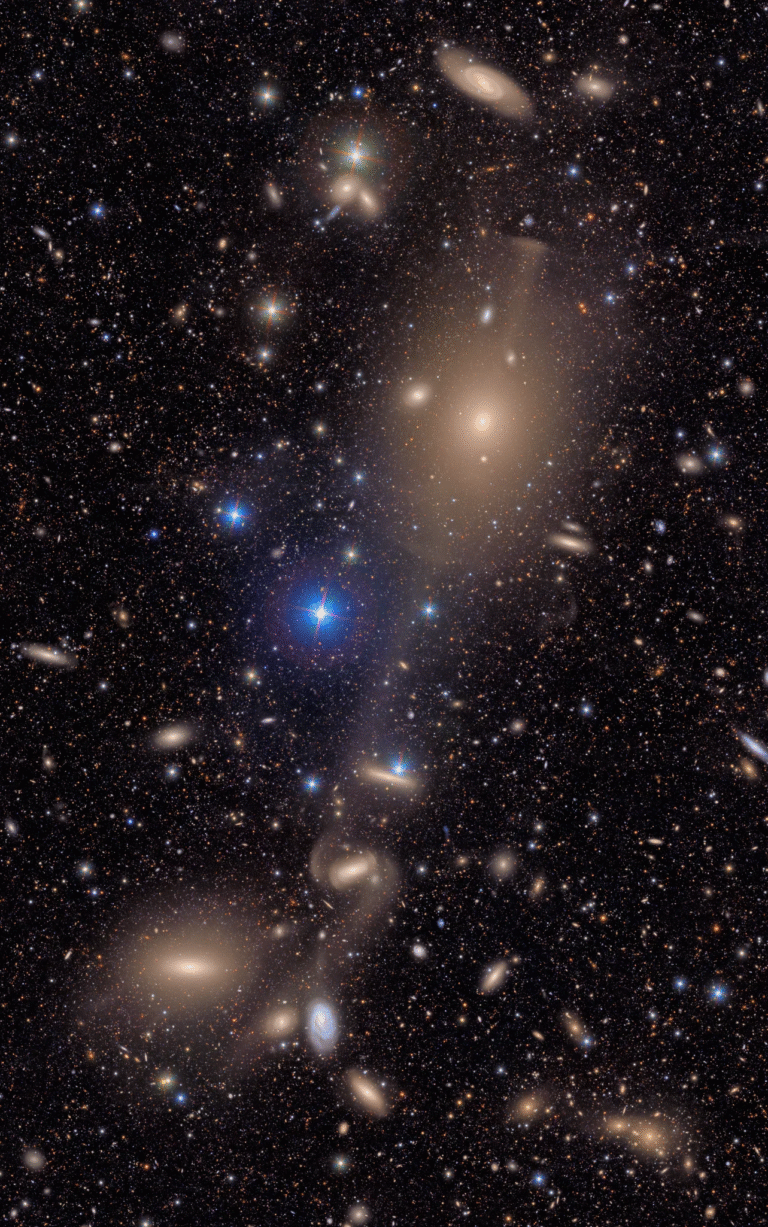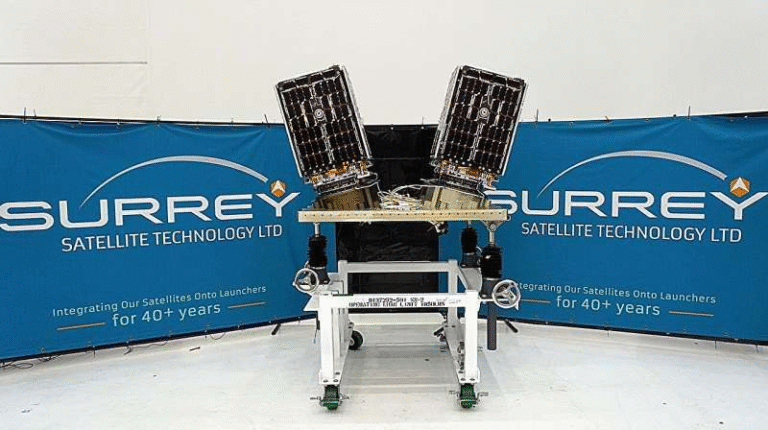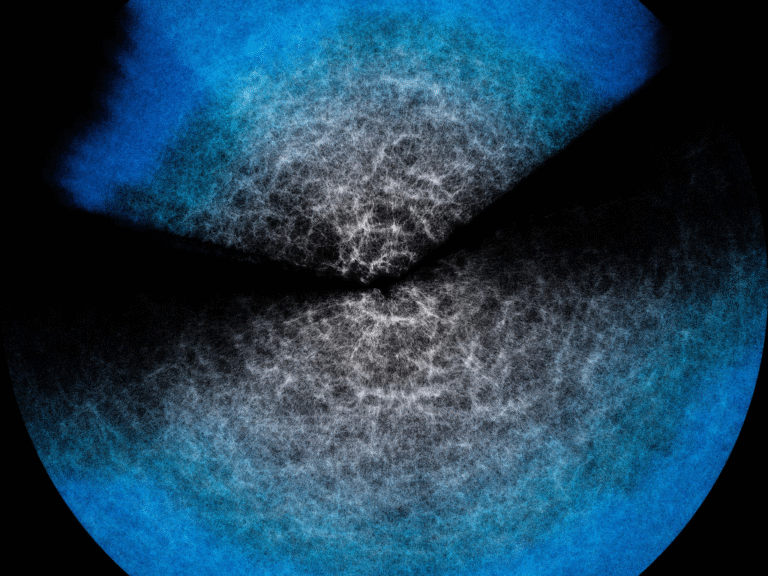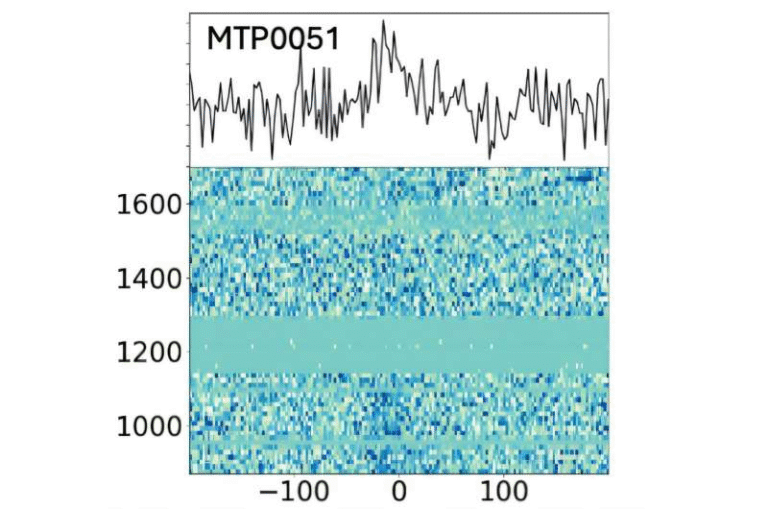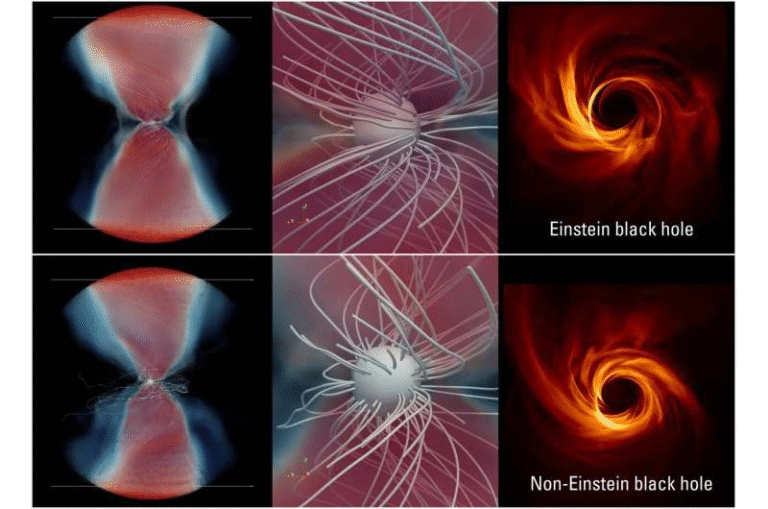JWST Might Have Found the Universe’s First “Dark Stars” – Objects Powered by Dark Matter

Astronomers using the James Webb Space Telescope (JWST) may have stumbled upon something extraordinary — what could be the universe’s very first dark stars, a completely new kind of stellar object powered not by nuclear fusion, but by dark matter annihilation.
A recent study led by Cosmin Ilie from Colgate University, along with Shafaat Mahmud, Jillian Paulin, and Katherine Freese, reports four ultra-distant cosmic objects whose spectra and morphology match the theoretical description of supermassive dark stars. These findings could mark the first observational evidence for a phenomenon scientists have speculated about for nearly two decades.
What Exactly Are Dark Stars?
Dark stars aren’t dark in the sense of being invisible. In fact, they’re expected to be extremely bright. The “dark” in their name refers to their energy source — dark matter, which makes up about 25% of the universe yet remains one of modern physics’ greatest mysteries.
Unlike ordinary stars powered by nuclear fusion (the process that fuses hydrogen into helium and releases energy), dark stars would shine thanks to the annihilation of dark matter particles. When certain types of dark matter particles — specifically Weakly Interacting Massive Particles (WIMPs) — collide, they annihilate each other, releasing heat. That heat could prevent the collapse of early hydrogen-helium gas clouds, creating giant, puffy stars supported by dark matter energy rather than fusion.
The idea was first developed in 2008 by Katherine Freese, Doug Spolyar, and Paolo Gondolo. They proposed that during the universe’s early days — just a few hundred million years after the Big Bang — the density of dark matter was high enough inside dark matter halos to form these luminous, exotic objects.
Later theoretical work in 2010 showed that such stars could grow extremely large, up to a million times the mass of the Sun, becoming what we now call supermassive dark stars. Once their dark matter fuel ran out, they might collapse into supermassive black holes, potentially explaining why such huge black holes already existed so early in cosmic history.
The JWST Discovery
The new research builds upon JWST’s Advanced Deep Extragalactic Survey (JADES) — one of the telescope’s most detailed surveys of the distant universe. This region lies within and around the Hubble Space Telescope’s Ultra Deep Field, an area of the sky famous for revealing thousands of faint galaxies billions of light-years away.
Using JWST’s NIRSpec (Near-Infrared Spectrograph) and NIRCam instruments, Ilie and his team identified four distant objects that could fit the bill for supermassive dark stars:
- JADES-GS-z14-0
- JADES-GS-z14-1
- JADES-GS-z13-0
- JADES-GS-z11-0
These objects sit at astonishingly high redshifts (z ≈ 11–14), meaning they existed when the universe was just 300 million years old. That makes them some of the earliest luminous bodies ever detected by humanity.
What caught the researchers’ attention wasn’t just their brightness, but their size, shape, and spectral signatures. Each of these objects could also be modeled as tiny galaxies, but their data fits just as well — or in some cases better — with the characteristics expected of dark stars.
The Evidence: Signs Hidden in the Spectrum
The researchers looked closely at each object’s spectra — the light spread out by wavelength, which acts like a fingerprint of its composition and structure.
A key prediction of dark star models is a distinct absorption feature at 1640 Angstroms (in the rest frame), caused by singly ionized helium (He II) in the star’s outer layers. While typical galaxies often show emission at this wavelength (from hot gas clouds), a dark star should show absorption.
And that’s exactly what Ilie’s team may have found.
In JADES-GS-z14-0, the researchers detected a weak dip in the spectrum at the precise wavelength of 1640 Å — the first potential observational hint of a dark star’s spectral signature. The detection is faint, with a signal-to-noise ratio around 2, which means it’s tentative and not yet conclusive. But it’s there.
Adding more intrigue, the Atacama Large Millimeter/submillimeter Array (ALMA) observed the same object and found oxygen (O III) emission lines. Oxygen is a “metal” in astronomical terms (anything heavier than helium), suggesting that the environment isn’t completely pristine.
If both features — the helium absorption and oxygen emission — are real, this could mean JADES-GS-z14-0 isn’t an isolated dark star floating in empty space. Instead, it might be a dark star embedded within or near a metal-rich galaxy, perhaps formed after a merger between two dark matter halos or coexisting with normal stars in the same region.
What Makes These Objects Special
Let’s look at the four candidates in detail:
- JADES-GS-z14-1 appears as a point source — unresolved, which means it looks like a single object rather than an extended galaxy. This fits perfectly with what a supermassive dark star might look like.
- JADES-GS-z14-0, the one showing the potential helium absorption line, is extremely compact but slightly resolved, possibly surrounded by an ionized nebula of hydrogen and helium gas.
- JADES-GS-z13-0 and JADES-GS-z11-0, both previously identified in 2023 photometric studies, continue to show properties consistent with the dark star model — luminous, compact, and unusually bright for their inferred ages.
Each of these candidates could still be interpreted as small, unusually bright galaxies, but their morphology, spectra, and brightness all line up intriguingly with what dark star theory predicts.
Why Astronomers Are Excited
Dark stars could explain two major puzzles JWST has raised:
- Why do we see so many extremely bright, compact objects at great distances?
JWST has found more luminous objects in the early universe than theoretical models predicted. If even some of those aren’t galaxies but supermassive dark stars, it could help balance the cosmic ledger. - How did supermassive black holes form so fast?
Black holes weighing millions or billions of solar masses have been seen less than a billion years after the Big Bang. The “dark star seed” theory offers a natural path — massive dark stars collapse into black holes, skipping intermediate stages.
If confirmed, these findings could redefine our understanding of how the first structures formed in the universe — and open an entirely new branch of astronomy dedicated to studying dark matter-powered stars.
The Challenges Ahead
As groundbreaking as the discovery sounds, astronomers are approaching it with cautious optimism.
There are significant uncertainties:
- The helium absorption signal is very weak, and further observations with higher sensitivity are needed to confirm it.
- Alternative explanations — such as compact galaxies with intense star formation — can also reproduce many of the same observations.
- The detection of oxygen complicates the dark star scenario, since such elements imply prior generations of stars had already lived and died, enriching the environment. Dark stars are expected to form in pristine, metal-free regions.
- The models themselves depend heavily on assumptions about dark matter properties — especially whether the particles annihilate efficiently enough to provide the required heat.
Future JWST observations and follow-up studies with ALMA and ground-based telescopes will be crucial to verifying whether these are indeed dark stars or something else entirely.
Understanding Dark Matter and WIMPs
The dark star theory also shines light on the broader mystery of dark matter.
For decades, scientists have known that most of the universe’s matter is invisible — it doesn’t emit or absorb light, but it exerts gravity. The leading candidates for dark matter are WIMPs (Weakly Interacting Massive Particles), hypothetical particles that rarely interact with normal matter except through gravity and, potentially, self-annihilation.
Experiments such as LUX-ZEPLIN, XENONnT, and others have been searching for direct detection of these particles, but so far, none have succeeded. If dark stars are confirmed, they could indirectly reveal properties of dark matter — such as its density, mass, and interaction rates — through their observed brightness and size.
That would make dark stars not just cosmic curiosities, but powerful natural laboratories for particle physics.
Looking Back to the Beginning of Time
If the universe truly hosted dark stars just a few hundred million years after the Big Bang, they could represent the missing link between the first gas clouds and the first galaxies.
Their light, now reaching us across 13 billion years, carries information about an epoch we’ve never directly observed before — the Cosmic Dawn.
And while these results are still tentative, the very idea that JWST may have already spotted such exotic objects shows how transformative this telescope is. With every deep-field image and every faint spectral line, it’s rewriting the earliest chapters of the cosmic story — revealing a universe far more complex and fascinating than we ever imagined.
What Happens Next
The research team plans to continue analyzing JWST data and collaborate with other observatories to confirm the spectral features. More detailed spectra could reveal additional dark star signatures, such as other helium or hydrogen absorption lines, and help distinguish between dark stars and small galaxies.
If confirmed, this discovery wouldn’t just be about a new type of star — it would represent the first indirect observational evidence of dark matter’s physical behavior in the early universe.
For now, the four candidates — JADES-GS-z14-0, JADES-GS-z14-1, JADES-GS-z13-0, and JADES-GS-z11-0 — remain exciting possibilities, awaiting the next round of data to tell us whether we’ve truly seen the light of stars powered by darkness itself.
Research Reference:
“Spectroscopic Supermassive Dark Star Candidates” – Proceedings of the National Academy of Sciences (2025)
